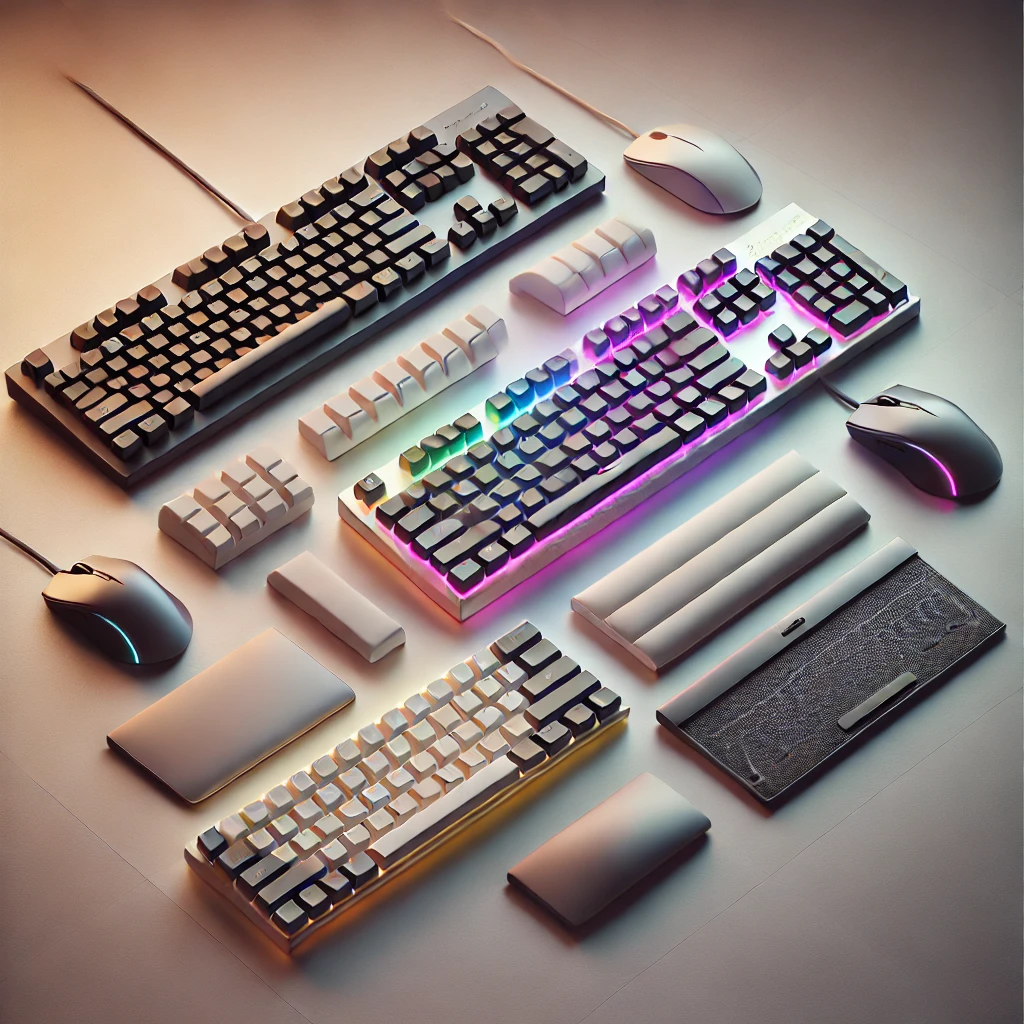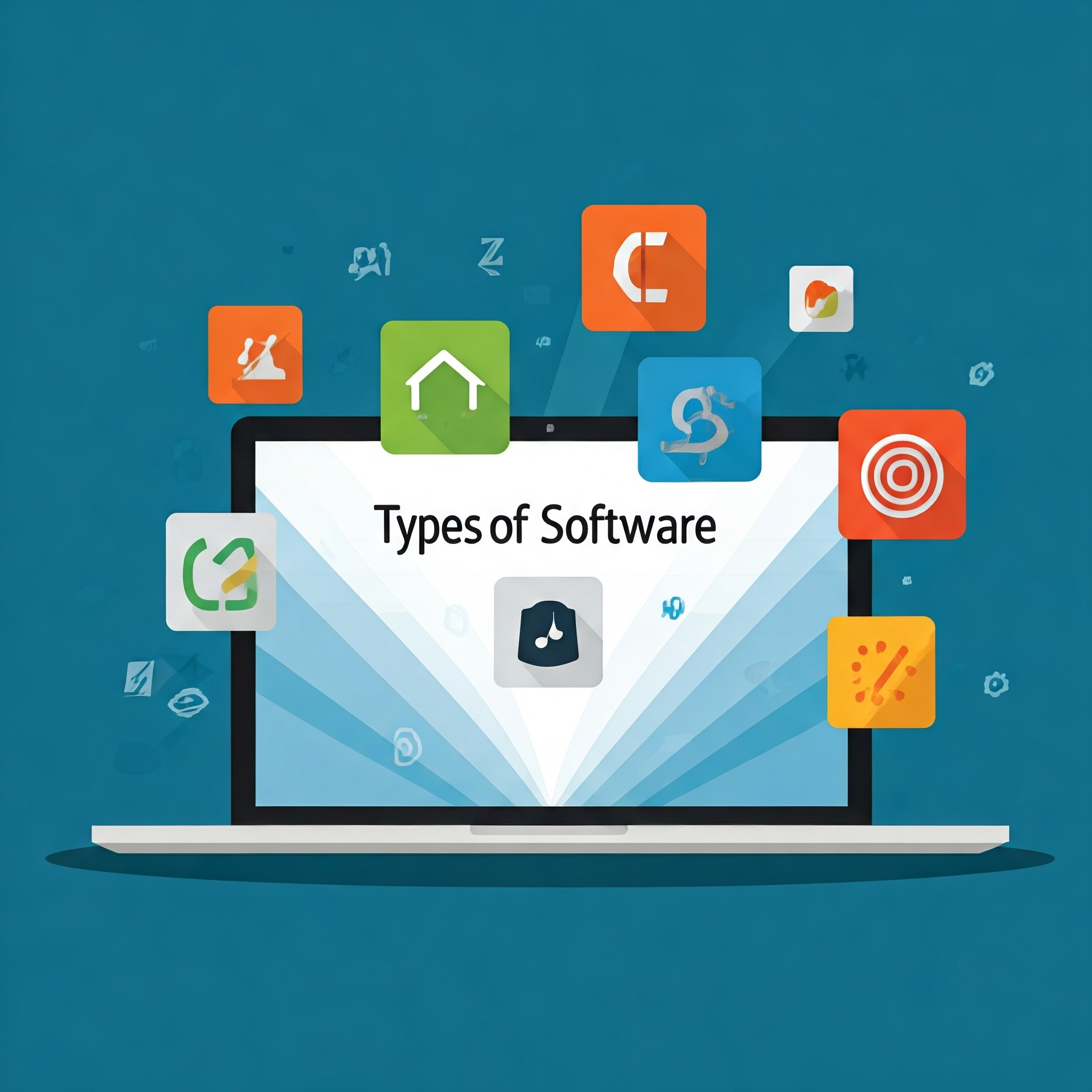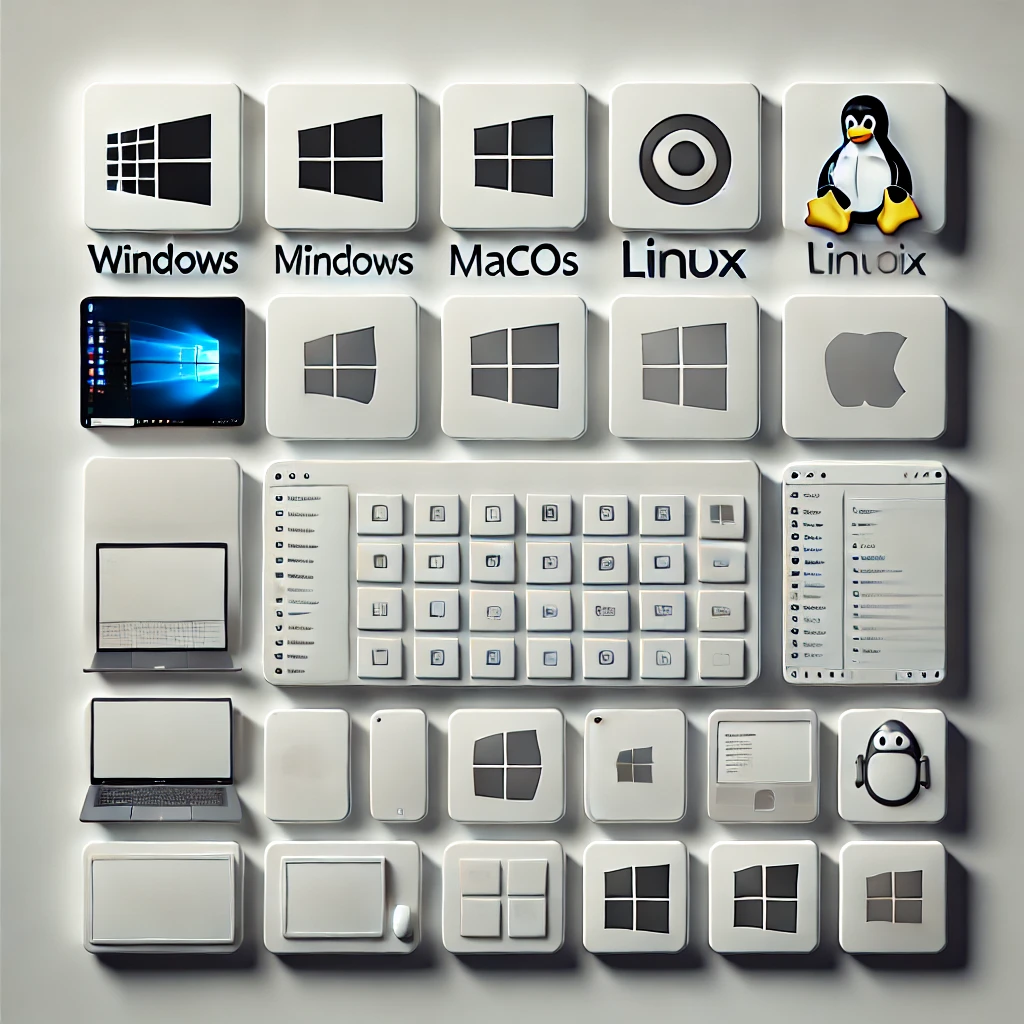Keyboards are among the most essential input devices in computing today, from personal computers to smartphones and tablets. As technology has developed, the keyboard came into existence with a variety of designs and functions that serve different user requirements and tastes. This blog will give you a thorough analysis of various keyboards according to how they are built, designed, key actions, etc. We will also see what the trends in keyboard technologies are and what is next.
Classification of Keyboards
We can classify keyboards in terms of their key switch type, size, layout, connectivity and extras. Let’s take a look at each of these categories:
Type of Keyboards Based on Key Switch Mechanism
It’s the way a key gets pressed and registered that matters most in the typing process. There are a few different types of key switches available, each with its own characteristics and action. These are the most common key switches on keyboards:
a) Mechanical Keyboards
Description: Mechanical keyboards utilize small mechanical switches underneath each key. These switches are composed of moving components (a spring, a metal contact) which can provide tactile feedback and clicks when they’re pressed. Mechanical switches are renowned for their longevity, accuracy, and various feedback capabilities.
Application: Great for gaming, programming, and working in the office if you need accurate and responsive support. Typists love them, especially if they like the feeling or sound of each press.
Examples: Some popular mechanical switches include Cherry MX (Red, Brown, Blue, Black), Razer, and Romer-G switches. The Corsair K70, Logitech G Pro X, and SteelSeries Apex Pro are all well-known mechanical keyboards.
b) Membrane Keyboards:
Description: Membrane keyboards have a rubber dome under each key that collapses when you press it. The rubber dome is pleasantly silent, and the keypress is triggered when the rubber dome touches a circuit board.
Applications: They are primarily used in budget devices, work environments, and informal typing environments. They are less noisy than mechanical keyboards and therefore more suitable for communal use.
Examples: Membrane keyboards make their way into most cheap office set-ups, including the Logitech K120 or the Microsoft Wired Keyboard 600.
c) Hybrid Keyboards
Description: Hybrid keyboards are hybrid devices between mechanical and membrane technologies. They have a key-like feel and membrane-like sound. This cross-section design tries to provide a trade-off between comfort and cost-efficiency.
Applications: Ideal for those who want to type with a robotic feeling but do not want to type too loudly, like the office workers and students.
Examples: The Logitech G213 Prodigy and Razer Cynosa V2 are both hybrid keyboards.
d) Scissor Switch Keyboards
Description: Scissor switch keyboards employ a mechanism with two interlocking plastic rods to create a scissor-like object. This design allows for a consistent, low-profile key press, commonly used in laptop keyboards.
Applications: For portable slim laptops/ultrabooks and applications that require little or no storage.
Examples: Typically, scissor switches are found on laptops such as the MacBook and Dell XPS models.
Type of Keyboards Based on Size and Layout
Keyboards come in different sizes and shapes, tailored to specific applications. The size of the keyboard largely depends on the number of keys that are present and the layout is how the keys are arranged.
a) Full-Sized Keyboards
Description: Full-size keyboards are conventional keyboards that include all the normal keys, like alphanumeric keys, function keys, and a numeric keypad. These keyboards provide the full functionality and are the most preferred choice for those who want all the keys they need to type, play games, or do business.
Applications: Recommended for Office workers, gamers, and anyone who wants all the keys at hand.
Examples: the Logitech K800 and Corsair K95 RGB are full size keyboards.
b) Tenkeyless Keyboards
Description: Tenkeyless keyboards are miniature versions of traditional keyboards with the numeric keypad removed. It’s an effective compromise for a compact and lighter device that doesn’t compromise much.
Description Great for gamers and professionals who want to travel with a smaller keyboard but don’t frequently use the numeric keypad.
Examples: The Logitech G Pro X and the Razer BlackWidow V3 Tenkeyless keyboards are tenkeyless keyboards.
c) Compact Keyboards
Description: Compact keyboards go one step further, stripping more keys, typically eliminating function rows and even arrow keys. They are extremely portable and can be rolled into a small desk space or used as a mobile working station.
Applications: Ideal for users who prefer portability over a full set of keys, like frequent travelers, programmers, or the minimalists.
Examples: A wireless mechanical keyboard, the Keychron K3, is small and sleek.
d) Ergonomic Keyboards
Description: Ergonomic keyboards ease pressure on the user’s hands and wrists by dividing the keyboard into two or more pieces, or curving it. This is designed to make typing long paragraphs more comfortable.
Applications: Ideal for those who are addicted to typing long sentences, such as writers, programmers, and typists.
Examples: The Microsoft Sculpt Ergonomic and Logitech Ergo K860 are ergonomic keyboards.
Type of Keyboards Based on Connectivity
You can define keyboards by how it interfaces with a computer or gadget. These two main modes of connection are wired and wireless.
a) Wired Keyboards
Description: Wired keyboards require a physical cable to attach to a computer. They provide an efficient and stable connection without any problems of battery life or noise.
Application: Best suited for desktop setups where dependability and performance are critical, such as games or working at the office.
Example: the SteelSeries Apex Pro and Logitech G213 are wired keyboards.
b) Wireless Keyboards
Description: Wireless keyboards wirelessly attach to a computer via Bluetooth or a wireless receiver, and do not require a physical cable. Such keyboards offer greater versatility and reduce clutter, and are perfect for office settings where cables are a problem.
Application: Perfect for home office, living room or anyone who doesn’t want wires cluttering up their workspace.
Examples: Wireless keyboards include the Logitech K780 and Apple Magic Keyboard.
Type of Keyboards Based on Connectivity
Many keyboards also feature extra features that enhance your user experience. Depending on whether we’re talking about gamers, working professionals, or just the average user, those functions will differ quite a bit.
a) Gaming Keyboards
Description: Gaming keyboards offer options such as customizable RGB lighting, programmable keys, improved response time, and mechanical switches for better gaming performance.
Applications: These are primarily created for gamers that demand high response speeds, longevity, and customisation.
Examples: The Corsair K70 RGB and Razer Huntsman Elite are gaming keyboards.
b) Multimedia Keyboards
Description: Multimedia keyboards include function keys to control media features like volume, music and video playback. They’re perfect for your home theater PCs or media rooms.
Applications: Ideal for those who want to manipulate their media while seated in a living room or multimedia workstation.
Examples: The Logitech K800 and Microsoft Wireless Desktop 850 are examples of multimedia keyboards.
c) Programmable Keyboards
Description: Programmable keyboards are used to customize keystrokes, macros, or create shortcuts for increased productivity or certain tasks.
Applications: Perfect for people working in video editing, music making or any other area where sophisticated commands are a regular part of your workflow.
Examples: The Logitech G Pro X and Razer Huntsman Elite are two such keywords featuring programmable keys.
Pros and Cons of Different Types of Keyboards
| Type | Pros | Cons |
| Mechanical Keyboards | Durable, precise, tactile feedback, customizable key switches | Can be loud, expensive, bulky |
| Membrane Keyboards | Quiet, affordable, more resistant to spills | Less durable, less tactile feedback |
| Hybrid Keyboards | Quieter than mechanical, affordable, decent feedback | Not as durable as full mechanical keyboards |
| Scissor Switch | Low profile, quiet, portable | Less tactile, more fragile than mechanical switches |
| Full-Sized Keyboards | Complete set of keys, ideal for all-purpose use | Larger, takes up more space |
| Tenkeyless Keyboards | Compact, portable, lightweight | Missing numeric keypad, may not be ideal for all users |
| Compact Keyboards | Ultra-portable, space-saving | Missing many keys, not suitable for all types of work |
| Ergonomic Keyboards | Reduces strain on wrists, comfortable for long typing sessions | May require an adjustment period, bulkier design |
| Wired Keyboards | No battery issues, reliable connection | Limited movement, messy cables |
| Wireless Keyboards | Flexible, cleaner desk setup, no cables | Battery-dependent, potential interference issues |
| Gaming Keyboards | Quick response, customizable lighting, programmable keys | Expensive, can be noisy |
| Multimedia Keyboards | Convenient media controls, ease of access for media functions | May lack the versatility of a regular keyboard |
| Programmable Keyboards | Customizable, great for professionals, enhances productivity | Can be expensive, may have a learning curve |
Best Comparison Table of Different Types of Keyboards
| Type | Size (inches) | Key Switch Type | Connectivity | Price Range (INR) | Power Supply |
| Mechanical Keyboards | 17-19 | Cherry MX, Razer | Wired/Wireless | ₹3,500 – ₹15,000 | USB/Battery |
| Membrane Keyboards | 16-18 | Rubber Dome | Wired/Wireless | ₹500 – ₹3,000 | USB/Battery |
| Hybrid Keyboards | 17-18 | Membrane/Mechanical | Wired/Wireless | ₹2,000 – ₹6,000 | USB/Battery |
| Scissor Switch | 12-15 | Scissor Switch | Wired/Wireless | ₹1,000 – ₹4,000 | USB/Battery |
| Full-Sized Keyboards | 17-18 | Mechanical/Membrane | Wired/Wireless | ₹1,500 – ₹10,000 | USB/Battery |
| Tenkeyless Keyboards | 14-16 | Mechanical/Membrane | Wired/Wireless | ₹2,000 – ₹8,000 | USB/Battery |
| Compact Keyboards | 10-13 | Mechanical/Membrane | Wired/Wireless | ₹1,500 – ₹7,000 | USB/Battery |
| Ergonomic Keyboards | 18-19 | Mechanical/Membrane | Wired/Wireless | ₹3,000 – ₹12,000 | USB/Battery |
| Gaming Keyboards | 17-19 | Mechanical | Wired/Wireless | ₹4,000 – ₹15,000 | USB/Battery |
| Multimedia Keyboards | 16-18 | Membrane/Hybrid | Wired/Wireless | ₹1,500 – ₹6,000 | USB/Battery |
Trending Topics in Keyboards
- Mechanical Keyboards with Customizable Switches
Example: The introduction of hot-swappable mechanical keyboards has allowed users to easily tailor the switches to their liking. Brands such as Keychron and Corsair now sell keyboards that let you swap switches without soldering them on.
Explanation: Adjustable switches allow you to select different types of switches, such as linear, tactile, or clicky. It has been popular among gamer, typewriter, and hobbyists who want a great typing experience.
- RGB and Dynamic Lighting
Example: Razer Huntsman Elite or Corsair K95 RGB Platinum keyboards take RGB lighting a step further and deliver millions of colors and animated effects.
Explanation: RGB lights don’t just look good, they make life better by providing lighting effects based on typed or game-play actions. Keyboards with programmable lights aren’t just for looks but also for functions such as indicating keystrokes or game progress. The design isn’t just for gaming, it’s for the workplace and creative areas, too, where light is programmable for a better experience.
- Ergonomic Keyboards for Health and Comfort
Example: Ergonomic laptops like the Logitech Ergo K860 or the Microsoft Sculpt use a split keyboard with angled keys that ease the pressure on the wrists and hands when typing for long periods of time.
Explanation: Since working remotely and using a longer computer is increasingly widespread, injuries due to typing for long hours and wrist strains have triggered a surge in ergonomic design. Such keyboards come with curves, split keys, and cushioned wrist rests to help you type in a more natural way.
- Low-Profile and Thin Keyboards
Example: Apple’s Magic Keyboard or Logitech’s MX Keys are sleek, low-profile models that are incredibly lightweight and suitable for the minimalist workstation or portable use.
Explanation: The trend towards sleek, slim keyboards stems from the desire for portable, visually discreet machines. They are more compact keyboards that deliver high typing speed. Low-profile keyboards are perfect for traveling, mobility and co-working settings – and for those who value minimalism and portability.
- Wireless Keyboards with Bluetooth and Multi-Device Connectivity
Example: The Logitech K780 Multi-Device Wireless Keyboard lets you use it on a variety of devices, including smartphones, tablets, and computers, with just a button press.
Explanation: Wireless keyboards are continually evolving, combining Bluetooth and proprietary wireless technologies that guarantee reliable, lag-free communication. Most modern wireless keyboards allow multi-device pairing so that you can easily navigate from one device to another in order to work efficiently.
Future Trends in Keyboards
- AI-Integrated Keyboards
Example: Keyboards in the future can be designed with AI as an internal function to learn the users’ typing pattern and provide suggested text, automatic corrections, and individual shortcuts.
Explanation: With AI and machine learning progressing at such an astonishing rate, keyboards could soon get smarter. Artificially intelligent keyboards will learn from the user’s typing style, preference, and errors to provide probable words or phrases, thus increasing speed and precision.
- Flexible and Foldable Keyboards
Example: Tablets, such as the LG Rollable Bluetooth Keyboard, allow you to fold your keyboard down for convenience.
Explanation: With mobile phones and laptops getting smaller and smaller, people are increasingly searching for lightweight, folding keyboards to maximize storage and portability. Such keyboards will also be foldable or rollable, which makes it possible for users to easily store and transport them without losing any functionality.
- Touch and Gesture-Controlled Keyboards
Example: Apple’s Magic Keyboard and other touchscreen devices may adopt more advanced gesture technology to enable users to write text or do anything via touch or air gestures.
Explanation: In the future, keyboards might incorporate more sophisticated touch and gesture-based control so users can control devices without pressing keys. Touch-screen displays might allow a user to swipe, scroll or even type via air gestures.
- Sustainability and Eco-Friendly Materials
Example: Logitech’s Eco-Friendly K580 keyboard is constructed from recyclable plastic, a move towards green manufacturing.
Explanation: As the focus on sustainability increases, most keyboard manufacturers are searching for sustainable materials to make their keyboards. New keyboards might also have biodegradable plastics, recycled parts, and eco-friendly structures.
- Haptic Feedback Keyboards
Example: Apple’s and Razer’s experimental haptic keyboards transmit vibrations that emulate the feeling of tapping on keys, even when they’re not mechanical.
Explanation: Haptic feedback may become the norm for the next generation keyboards and provide users with a more natural typing experience. Haptic feedback, whether for smartphones, laptops or virtual keyboards, mimics key-presses with vibrations that simulate real-world key presses.
- Virtual and Augmented Reality Keyboards
Example: Consider a virtual keyboard projected onto any surface, which can be typed simply by touching the keys with your fingers.
Explanation: With the advancement of virtual and augmented reality, we might see virtual keyboards that don’t require a physical device at all. In these environments, a holographic or AR keyboard would be projected on any surface where people could press keys with their hands.
- Biometric Keyboards for Security
Example: Keyboards with built-in fingerprint or facial recognition that allows you to unplug your devices without passwords.
Explanation: As security grows increasingly important, keyboard biometric authentication may become more widespread. Keyboards could have a second level of security without the requirement of passwords by scanning fingerprints or facial recognition. It would be not only more secure, but it would be easier for the user to access things in a secure and productive way.
The keyboard industry is making a dramatic shift as new technologies promise to change the way we work with computers and gadgets. With customisable mechanical switches, AI-controlled smart keyboards, and slick surfaces, keyboard technology is in an era of huge opportunity. Depending on how trends are developed, users will be able to find increasingly ergonomic, portable and intelligent options to satisfy their specific needs, whether they are at work, playing games, or entering new digital worlds.



